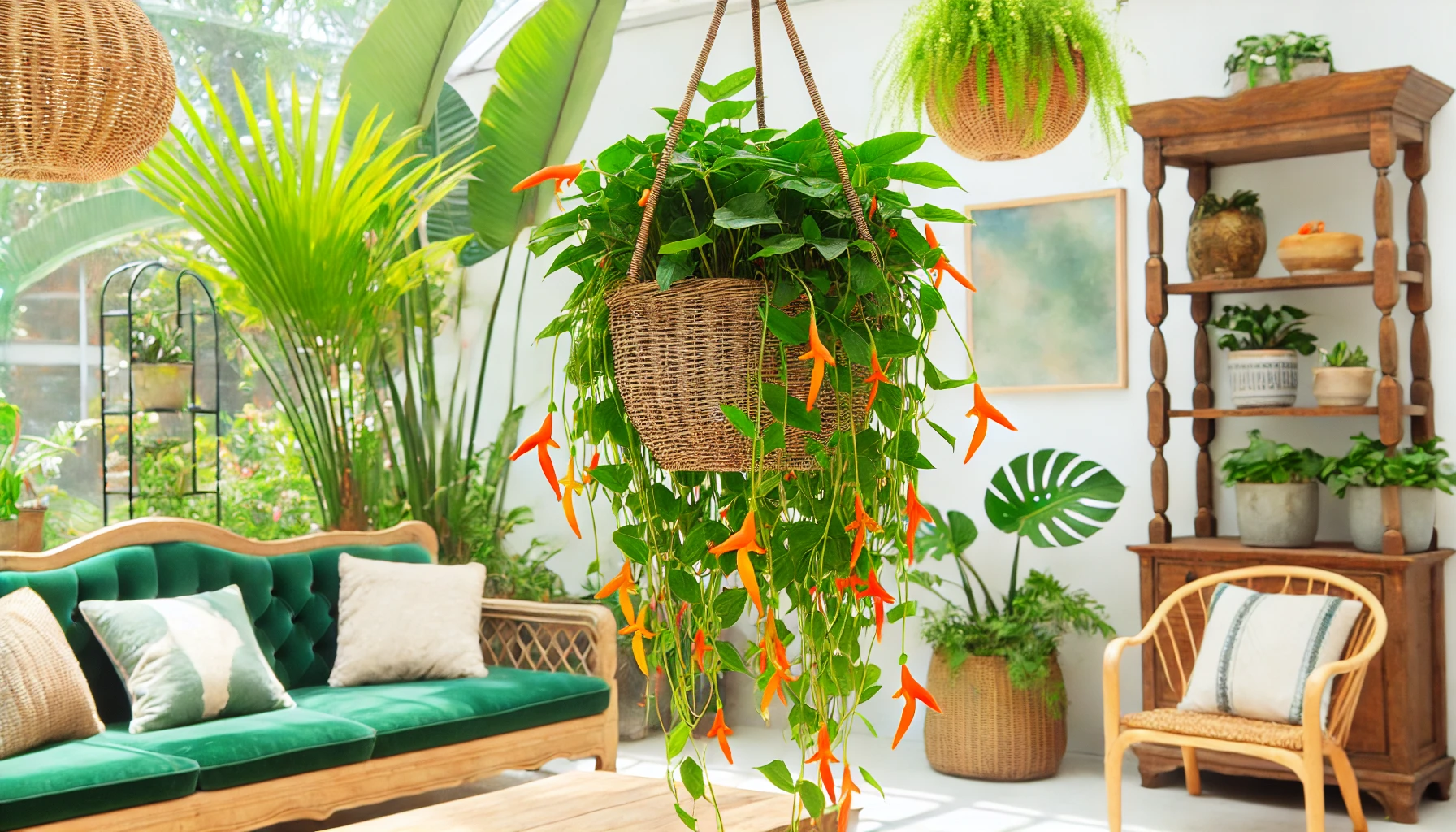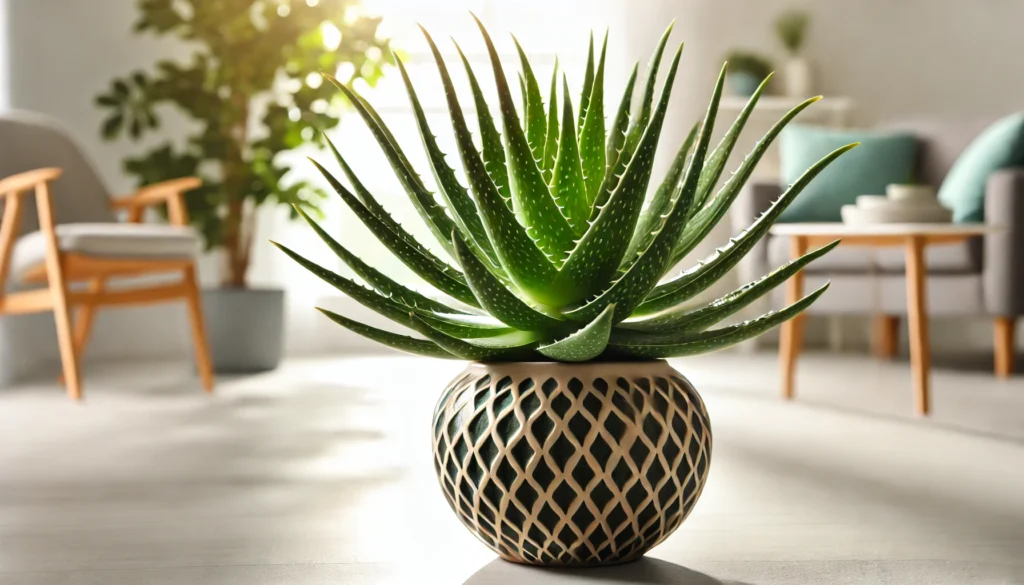
The Goldfish Plant (Nematanthus gregarius) is a charming and vibrant perennial that gets its name from its bright, fish-shaped flowers. These orange blooms dangle gracefully from its trailing stems, resembling tiny goldfish swimming among the leaves. This unique houseplant is a favorite for hanging baskets, where it can grow up to 2 feet (60 cm) long, cascading beautifully in any indoor space.
History and Ideal Growing Conditions
Native to the tropical regions of Central and South America, the Goldfish Plant thrives in warm, humid environments. It was introduced to the indoor gardening world for its exotic look and ability to adapt to indoor conditions. Goldfish Plants prefer bright, indirect light but can tolerate some direct sunlight, especially in the morning. They thrive in temperatures between 65°F and 75°F (18°C to 24°C), making them perfect for typical indoor environments. High humidity is ideal, but they can adapt to average indoor humidity levels as well.
Is the Goldfish Plant Toxic to Pets?
The Goldfish Plant is generally considered non-toxic to pets, making it a safe choice for homes with cats and dogs. However, while it’s safe, it’s always wise to prevent pets from chewing on any plant to avoid possible digestive upset.
Safe Alternatives for Pet Owners
Since the Goldfish Plant is non-toxic, there’s no need to find alternatives if you have pets. However, if you want to add more pet-safe plants to your collection, consider African Violets (Saintpaulia spp.) or Boston Ferns (Nephrolepis exaltata). Both are non-toxic and provide lush greenery.
Best Practices for Caring for Your Goldfish Plant
Caring for a Goldfish Plant is straightforward, especially if you follow these best practices.
Watering and Humidity
Goldfish Plants prefer regular watering but don’t like to sit in water. Water when the top inch (2.5 cm) of soil feels dry, and ensure the pot has good drainage. During the growing season (spring and summer), water more frequently, but reduce watering in the fall and winter when the plant’s growth slows. High humidity is ideal for this plant, so misting it regularly or placing it near a humidifier can help maintain the right environment.
Soil, Light, and Temperature
The Goldfish Plant thrives in well-draining soil, such as a mix designed for African Violets. It loves bright, indirect light but can tolerate some direct sunlight, especially in the morning. Avoid placing it in low-light conditions, as this can reduce flowering. The ideal temperature range for the Goldfish Plant is between 65°F and 75°F (18°C to 24°C). Keep it away from drafts and sudden temperature changes, which can stress the plant and lead to leaf drop.
Common Problems and Remedies
Goldfish Plants are hardy but can face a few common problems.
One issue to watch for is leaf drop, often caused by sudden temperature changes or drafts. Ensure your plant is in a stable environment with consistent temperatures. Yellowing leaves can indicate overwatering, so allow the soil to dry out slightly between waterings and ensure good drainage. If the plant isn’t flowering well, it may need more light. Moving it to a brighter spot can encourage more blooms.
Invasiveness
The Goldfish Plant is not considered invasive, making it a safe choice for indoor gardens without the risk of it spreading uncontrollably. It grows at a moderate rate and stays well-contained in a pot or hanging basket. If you want to avoid invasive plants, this plant is a good choice.
Propagation and Benefits of the Goldfish Plant
The Goldfish Plant is easy to propagate through stem cuttings, which can be rooted in water or directly in soil. Simply take a healthy cutting with a few leaves, remove the lower leaves, and place it in your chosen medium. In a few weeks, roots will form, and the cutting will begin to grow. Beyond its beauty, the Goldfish Plant adds a tropical feel to your home, brightening any space with its vibrant, fish-shaped flowers.
Final Thoughts
The Goldfish Plant is a delightful and unique houseplant that adds a splash of color and whimsy to any indoor space. Its non-toxic nature makes it a safe choice for pet owners, and its relatively simple care requirements make it accessible for both novice and experienced gardeners. With the right care, your Goldfish Plant will thrive, offering beautiful blooms and lush foliage that will enhance your home year-round. Whether you’re looking to add a tropical touch or simply want a plant with personality, the Goldfish Plant is a fantastic choice.



